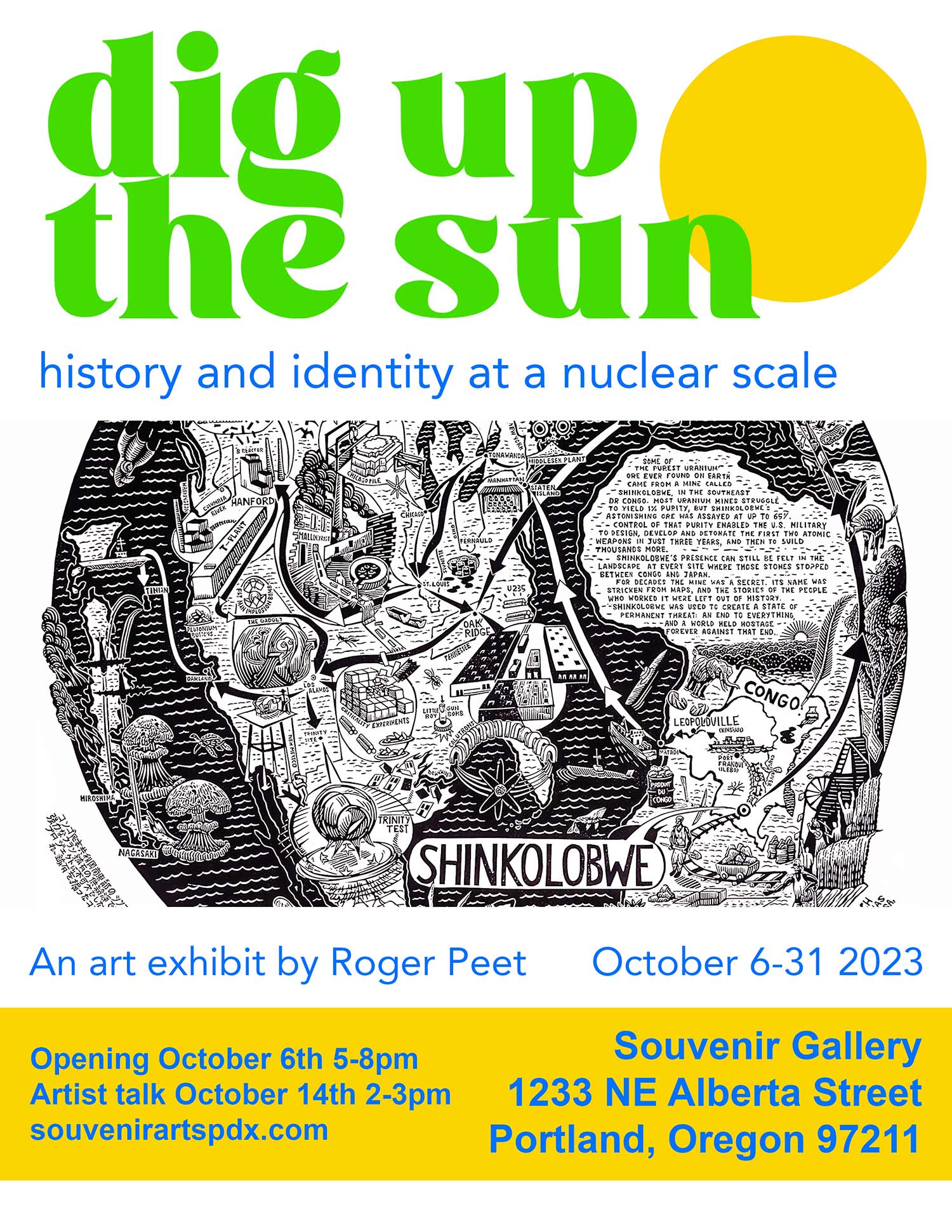Dig Up The Sun is an exhibit by Portland, Oregon artist Roger Peet. The exhibit is centered around a linoleum blockprint map which traces the route of the Congolese uranium used to develop the first atomic weapons through the nascent infrastructure of the Manhattan Project. It expands to include contemporary investigations into the legacy of the mine which produced that uranium ore, called Shinkolobwe, in the landscape of both DR Congo and the United States. This includes testimony from medical professionals, historians and botanists in Congo, as well as the story of the contamination at the Hanford Nuclear Reservation 3 hours to the east of Portland, the most highly contaminated site in the western hemisphere. Hanford’s radioactive pollution is largely composed of the waste left behind after processing that Congolese ore, a distinction which it shares with many of the Manhattan Project’s processing sites, as well as the communities in New Mexico, the Marshall Islands, and Japan devastated by both nuclear weapons testing and their use in war. The Shinkolobwe mine’s uranium draws a line through this narrative, but the mineworkers who dug the ore have been left out of history.
Through print, paper-folding, installation, photography, wall-painting and projection, Dig Up The Sun also investigates a deeply personal history of the artists’ father; a British pilot working as a contractor for the CIA in America’s project to dominate Congo in the decades after the war, following the use of its uranium to achieve global nuclear hegemony. The manufacture of identity, the colonial control of minerals, and the power to destroy the future reveal a mystery at the heart of the story of the bomb: that the world has already ended, but the blast is not yet here.
This project was funded in part by a grant from RACC.
